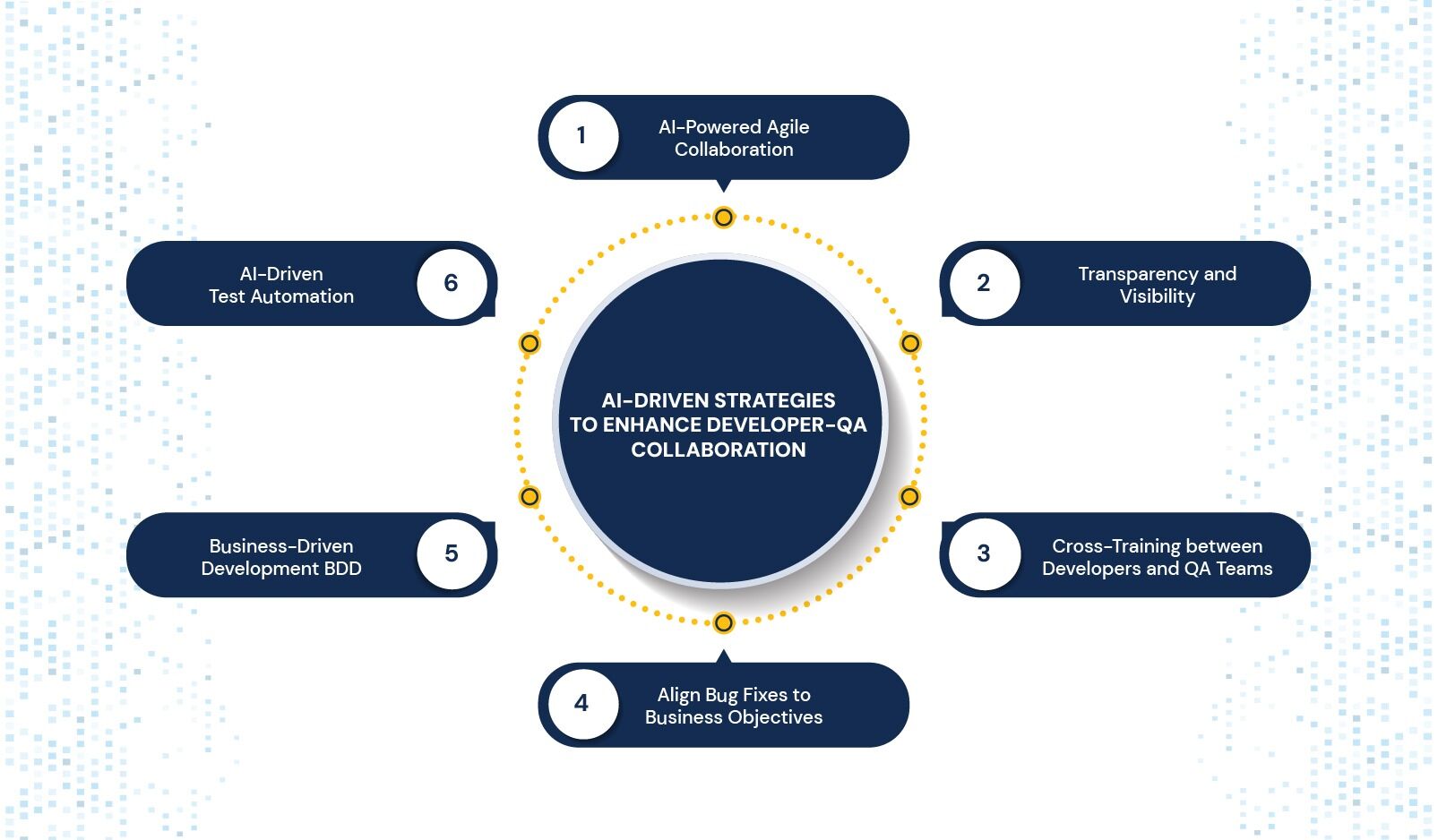Software development is evolving at an unprecedented pace, driven by emerging technologies like Generative AI, Agentic AI, and automated testing frameworks.
The complexity of modern software solutions and rising user expectations make software quality assurance (QA) more critical than ever. Traditional testing methods alone can no longer keep up with the speed and intricacy of modern applications.
Enter AI-enhanced QA testing—a game-changer in software development. In this article, we explore why software quality assurance testers remain indispensable and how AI-powered solutions are revolutionizing quality assurance.
What is AI-Enhanced QA Testing?
QA testing is the backbone of software reliability, ensuring seamless functionality and exceptional user experiences. Integrating AI into QA processes enhances defect detection, optimizes test coverage, and accelerates test execution.
Modern AI-driven QA incorporates:
- Generative AI for automated test case creation and bug prediction
- Agentic AI that autonomously identifies software weaknesses and self-corrects errors
- AI-powered anomaly detection to preemptively find defects before they impact users
- Predictive analytics to forecast potential risks and ensure proactive issue resolution
By embracing AI-enhanced QA, organizations can reduce risks and deliver high-quality software faster and more efficiently.
The Evolving Role of a QA Tester in the AI Era
The role of a QA tester has expanded beyond manual testing to include AI-driven validation and predictive analytics. Here’s how QA testers are using AI tools to optimize software quality:
- Test Planning and Strategy Development: AI-powered tools like Microsoft Azure Test Plans and Google Cloud Test Lab help testers create dynamic test strategies by analyzing historical test data and predicting areas prone to failure.
- Test Case Creation and Execution: AI-driven frameworks such as NVIDIA Clara Guardian and OpenAI Codex automate test case generation, reducing manual effort and improving accuracy.
- Defect Identification, Reporting, and Tracking: AI-powered bug tracking tools like IBM Watson AIOps and Oracle Cloud Observability and Management Platform enable real-time defect detection and predictive analytics to minimize software failures.
- Documentation and Test Result Analysis: Generative AI tools such as Meta’s Llama and AWS DevOps Guru automate documentation, analyze test results, and generate insightful reports for stakeholders.
How QA Testers and Developers Collaborate with AI Assistance
AI is transforming how QA testers and developers collaborate, enhancing efficiency and communication:
- AI-Powered Communication: Platforms like Google Gemini facilitate natural language-based test reporting and collaborative debugging sessions between developers and QA testers.
- Predictive Issue Resolution: AI-driven code analysis tools such as DeepCode and CodeGuru Reviewer (AWS) flag potential defects before deployment, helping testers and developers proactively resolve issues.
- Intelligent Bug Fixing: With Agentic AI, AI agents can suggest bug fixes and even autonomously implement minor corrections based on learned patterns from past defect resolutions.
AI-Driven Strategies to Enhance Developer-QA Collaboration
Fostering a culture of collaboration between developers and QA teams is crucial for success. AI-driven tools can optimize teamwork through the following:

- AI-Powered Agile Collaboration: Tools like JIRA Align AI enhance project tracking, enabling transparent task management and real-time issue tracking.
- Transparency and Visibility: It should be able to provide all team members with visibility into activities. Transparent communication avoids duplicated work and aligns teams toward the same objectives. Use workflow management tools to support updates and ensure clarity.
- Cross-training between developers and QA teams: This should be promoted to enhance each party’s understanding of processes. This mutual understanding helps optimize performance through proper communication.
- Align Bug Fixes to Business Objectives: Develop a comprehensive understanding of User needs and business objectives. This empowers teams to decide on the bug-fixes, solve major problems, or address customer grievances.
- Business-Driven Development BDD: Implement BDD where QA forms test cases against specific business requirements and developers develop code. It accelerates the feedback cycles and aligns software with a business need.
- AI-Driven Test Automation: Frameworks like Selenium with AI-based self-healing scripts adapt test cases dynamically as applications evolve.
Challenges Faced by QA Testers in an AI-Powered World
While AI has revolutionized QA, testers still face challenges that require expert intervention:
- Rapidly Changing Requirements: AI-based requirement analysis tools such as Google Cloud AI-powered Insights help manage evolving project needs.
- Time Constraints & Scalability: AI-driven parallel test execution frameworks reduce testing bottlenecks and accelerate release cycles.
- Test Data Management: Synthetic test data generation with Microsoft’s Turing AI ensures realistic test scenarios without exposing sensitive user data.
- Maintaining Automated Test Scripts: AI-based self-healing automation in tools like Testim.io minimizes script maintenance efforts.
- Complex Test Environments: Diverse test environments often require complicated setup and management when testing across various platforms, devices, and configurations.
- Defect Management: Monitoring and managing defects at every stage of their lifecycle- from identification to resolution- requires careful organization and communication.
The Future of AI in Software Quality Assurance Testing
AI-driven QA is not just a trend—it’s the future. AI is reshaping QA, enabling faster, more efficient software testing. As businesses adapt, integrating AI-Driven QA solutions becomes essential for maintaining quality and competitiveness. As AI continues to advance, QA testers will increasingly utilize it:
- Self-learning AI for autonomous bug detection and resolution
- AI-powered performance optimization for real-time monitoring and tuning
- Conversational AI test execution, where testers interact with AI agents to refine test cases dynamically
Final Thoughts: Why You Need AI-Powered QA Services
The role of QA testers has never been more vital. By integrating AI into the QA and testing services, businesses can enhance software reliability, accelerate development cycles, and minimize costly defects.
However, implementing AI-driven QA solutions requires expertise, customization, and ongoing optimization.
At Xavor, we provide AI-powered QA solutions to help businesses deliver superior software. Our experts customize and integrate AI-driven tools like AWS DevOps Guru, Microsoft Azure Test Plans, Google Cloud AI-powered Insights, and many more to streamline your QA processes.
You can contact us at [email protected] . We will schedule a free consultation session to explore how Xavor can assist you in this matter.

